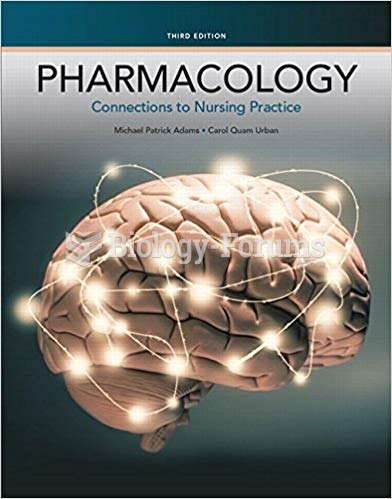|
|
|
On average, someone in the United States has a stroke about every 40 seconds. This is about 795,000 people per year.
Cutaneous mucormycosis is a rare fungal infection that has been fatal in at least 29% of cases, and in as many as 83% of cases, depending on the patient's health prior to infection. It has occurred often after natural disasters such as tornados, and early treatment is essential.
Disorders that may affect pharmacodynamics include genetic mutations, malnutrition, thyrotoxicosis, myasthenia gravis, Parkinson's disease, and certain forms of insulin-resistant diabetes mellitus.
In 2012, nearly 24 milliion Americans, aged 12 and older, had abused an illicit drug, according to the National Institute on Drug Abuse (NIDA).
Acetaminophen (Tylenol) in overdose can seriously damage the liver. It should never be taken by people who use alcohol heavily; it can result in severe liver damage and even a condition requiring a liver transplant.
 Small nuclear RNAs (snRNA), 100-200 bp in length, form part of the splicing mechanisms to process mR
Small nuclear RNAs (snRNA), 100-200 bp in length, form part of the splicing mechanisms to process mR
 Undrape top leg and apply warming effleurage to lateral leg, hip, and foot in distal to proximal ...
Undrape top leg and apply warming effleurage to lateral leg, hip, and foot in distal to proximal ...
 Press the back muscles, using the palms or loose fists to apply compression. Do not hyperextend your ...
Press the back muscles, using the palms or loose fists to apply compression. Do not hyperextend your ...




